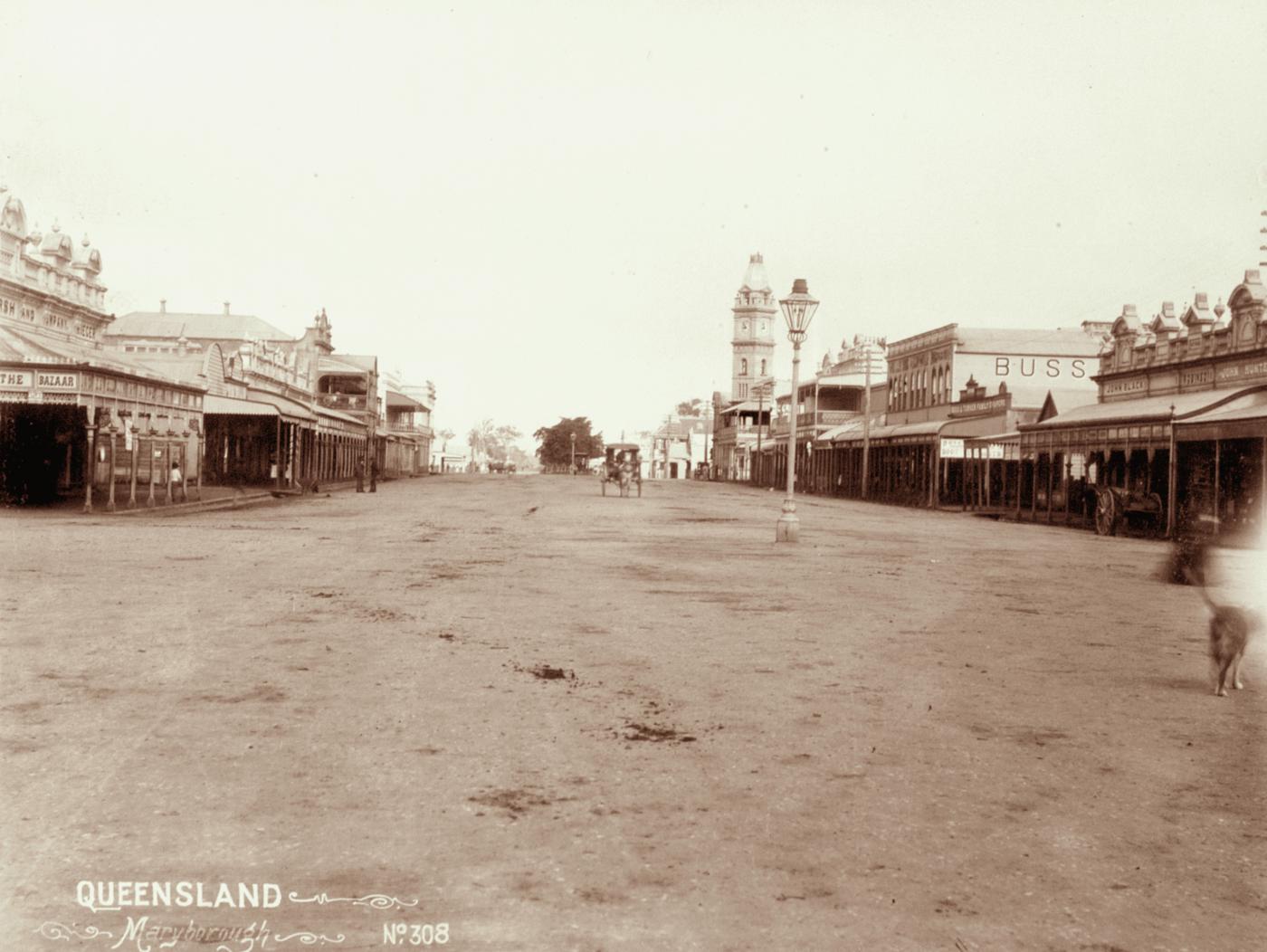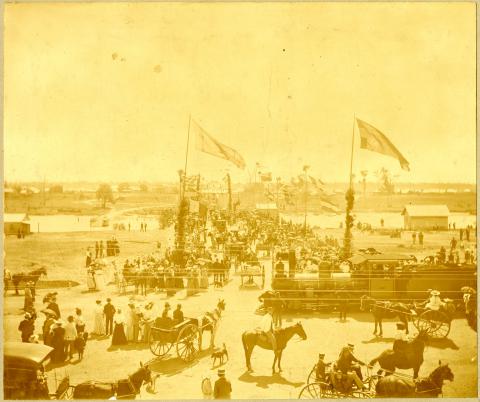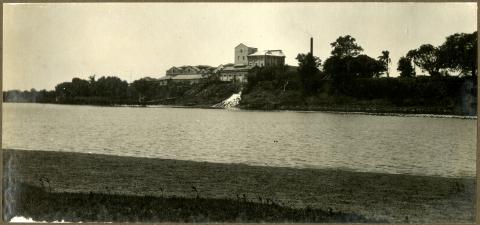Bourbong Street, c1897
Bourbong Street, Bundaberg, c1897
From The Bundaberg Mail, Tuesday 21 October 1924.
BOURBON OR BOURBONG STREET
A correspondent writing in the "Mail" on January 18th 1895 declaims against the "g" in the spelling of the name of the main street. He says: To old fashioned folk the modern spelling has jarred on our nervous system severely. Someone of an omposing elevation of mind probably thought it did or ought to belong to the aboriginal dialect. As there is not such aprt of speech as "bour" in native dialect, the "bong" meaning dead, renders the title silly and unintelligible. The main street of Bundaberg was named Bourbon by the surveyor who laid the principal sections of the town out for a well defined and perfectly understandable reason. The first cane planted at Rubyanna came from Bourbon, an island in the East Indies, and that plant bears its French imperial title even to this day. It is difficult to understand how the name was altered locally to a meaningless farcicality, by boxing up a French imperial standard with an impossible aboriginal sentence.
Mr. N. E. N. Tooth writes a few days later from Maryborough: I note in your issue a paragraph referring to the name of the principal street in your city. Possibly I may be able to throw a little light on the subject. As to whether the proper name is Bourbon or Bourbong I do not venture to offer an opinion, but I've heard it asserted that the name is a native or aboriginal one. If so the name should be Bier-rabong, meaning plenty dead. In the early 'sixties I knew every inch of country between the Burnett and Kolan Rivers from the sea up to Gin Gin, as at that time my brothers and myself had the Colanne station. Where North Bundaberg now is the blacks called Bierrabong. Neither for love or money could we get any blacks to go near the place. We knew it was on account of superstition, but it was a mere chance that revealed the cause. Two or three of us were one day looking for ebony wood (for stockwhip handles) when we suddenly came on a heap of human bones, among which were 15 or 20 skulls. Now the scrub is all clear I could not hit the exact locality, but it could not have been very far from Waterview. At first we thought it was an old burying place of the blacks, but I afterwards learnt that it was the spot where the native police had come upon a large camp of blacks and "dispersed" them. Hence the name Bierrabong.
I often notice in your journal names of places spelt very differently from the olden times - notably Colanne, now spelt Kolan, and Yandaram (meaning always moving or running), now spelt Yandaran. The other day in Bundaberg an old resident informed me that Ottoo, the name of the block on which is North Bundaberg, us a native name. It it not so. The block of country was named by the late Mr. S. Hassall "Otoo," after a favourite horse of his which died three or four days after Mr. Hassall arrived on the station with the first mob of cattle, and we buried the old fellow under an apple tree somewhere between the long swamp and the river: and Hassall, when he took up the country, out of kindly feeling to the old horse that had carried him 2000 miles, immortalised the good old servant by naming the block of country Otoo.
Then and now...

You might also like
Location of this image
View Larger Map | See more historic photographs
- Category
- Time period
- Persistent identifierImage ID 2242
- Queensland State Archive series linkSeries ID 177, Photograph Albums - Early Queensland
- Queensland State Archives digital image linkDigital Image ID 2242

